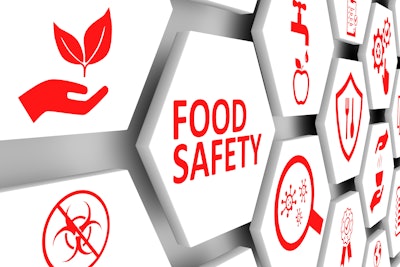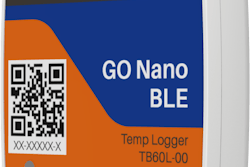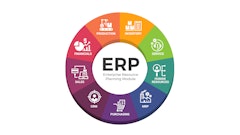
In September, the U.S. Food and Drug Administration (FDA) extended the compliance deadline for FSMA Section 204 to January 2028 and many food companies breathed a sigh of relief. The rule requires high-risk foods businesses to implement robust traceability systems that can identify and track lot numbers and expiration dates anywhere along the supply chain.
But delaying implementing the necessary systems and processes could be an expensive strategy, even for food and beverage businesses that aren’t directly impacted by the rule.
The drivers for getting traceability and transparency right are more than checking a Section 204 checkbox. Food brands that consider traceability and transparency strategically important today will see the benefits, including brand protection, cost savings, operational efficiency, and customer trust long before 2028.
Costly recalls with escalating consequences
Food recalls cost U.S. companies an average of $10 million each, not including brand damage and lost sales, according to the Grocery Manufacturers Association. Recalls are also cited as one of the biggest threats to profitability.
There is no shortage of examples across the food industry. The FDA’s own list of recalls, market withdrawals and safety alerts indicates the scale of the issue, and high-profile cases are never far from the media spotlight. With fragile consumer trust and social media amplifying every misstep, traceability is no longer optional. It protects against reputational damage and spiraling costs.
In 2015, a frozen food brand recalled an entire product line due to harmful bacteria contamination. It was able to trace the contaminated ice cream to specific lots, and avoided a broader, more damaging and costly recall, but was still ordered to pay $17.25 million In criminal penalties. By contrast, a decade earlier, a corn flour supplier faced massive fines and brand collapse when found to be using non-compliant ingredients without proper traceability.
Retailers aren’t waiting
Even if the FDA hadn’t extended the Section 204 deadline, retailers are tightening their own requirements. For example, one of the largest retailers in the United States recently raised its on-time, in-full (OTIF) performance metric from 70% to 98%, requiring suppliers to deliver almost every order exactly as promised. Failure to comply means fines of 3% of the cost of goods. Now, across the board, an OTIF rate of below 95% can increase the risk of out-of-stocks, chargebacks and lost retailer trust.
For food and beverage businesses, missed windows for short-dated products or aging inventory can be costly. Brands have experienced spoilage or write-offs in temperature-sensitive or perishable categories, discounting to move inventory that’s no longer compliant or lost revenue on seasonal or promotional goods that miss timing. For fast-moving categories, the difference between on time and two days late can be the difference between sell-through and scrap.
The metric continues to raise the bar for suppliers, while other retailers also strengthen their own mandates. Many now expect SQF-certified warehouses and demonstrable compliance with FDA rules. Target and others require specific labelling formats and accurate product information, including price, branded materials, and packaging details, as well as particular shipping information. Without them, businesses can find themselves in trouble.
Just last year, dairy manufacturer recalled its a specific product line because it failed to comply with registration requirements, triggering a recall. This, and many cases like it, show the importance of transparency and traceability, supplier registration, lot control, and oversight.
Retailers are setting standards, and traceability and transparency play a vital role in meeting their expectations. If a brand is unable to show real-time visibility or trace a shipment instantly, it runs the risk of fines, chargebacks, or losing space.
Transparency and traceability as competitive advantages
Traceability is crucial for effectively tracking products from their origin to their final destination. With traceability, every detail of every shipment is viewable at a macro level, making it possible to know exactly where products are, change or recall an order or reroute a shipment at any moment, and ensure compliance with any mandate or regulation. Transparency provides a real-time view of the business and every single transaction.
For businesses that invest, the benefits extend far beyond regulatory compliance;
Lot-level visibility supports first-in, first-out (FIFO) inventory management, ensuring products are sold before they expire. Accurate expiration tracking reduces spoilage, minimizes write-offs, and improves profit margins.
Detailed traceability data creates an auditable trail that helps settle conflicts quickly. One global beverage company, for instance, used its logistics partner’s traceability data to resolve sales territory disputes decisively, saving time, money, and relationships.
Achieving and maintaining certifications like SQF requires strict standards for cleanliness, documentation, and process discipline. These practices improve compliance and drive efficiency and consistency across operations.
More customers today care about the provenance of their food, and retailers demand transparency. Brands that can demonstrate transparency and traceability build deeper trust, which translates to stronger relationships and greater long-term loyalty.
Act now
The extended FSMA deadline is a chance to build systems thoughtfully, not a reason to delay. Implementing a compliance program requires investment in technology, training, and culture.
Companies that use the window wisely will discover tangible benefits: lower costs, stronger retailer relationships, and improved customer trust. Our message is don’t wait until 2028.


















